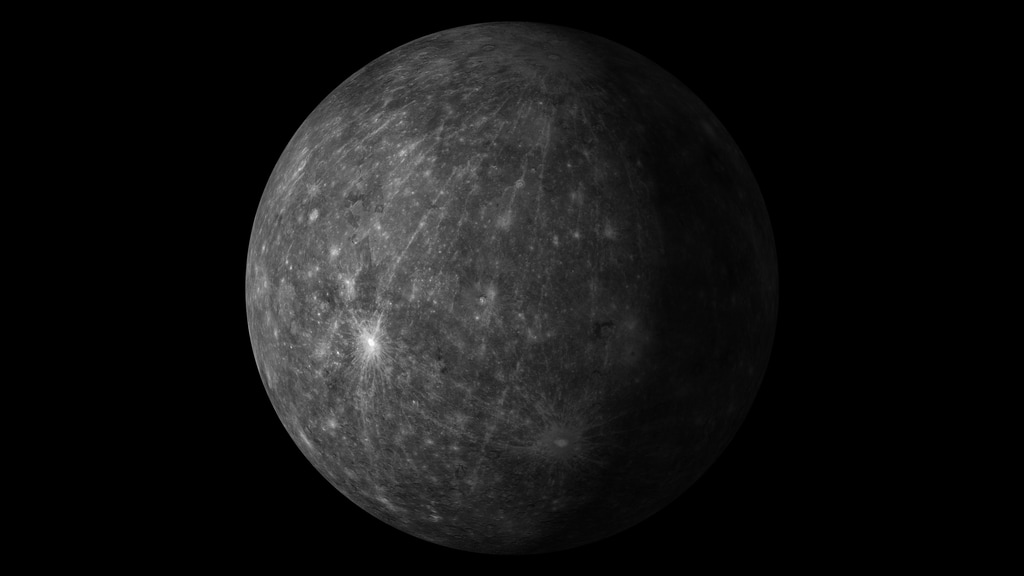Mercury's Ice Lockers
Mercury, the closest planet to the sun, sits in the hot seat, with temperatures soaring up to 800 degrees Fahrenheit. Certain spots at the planet's north and south poles, however, remain extremely cold—so cold, in fact, that scientists long suspected this sun-scorched planet of harboring ice. Sure enough, in 2012 NASA's MESSENGER (MErcury Surface, Space ENvironment, GEochemistry, and Ranging) mission reported finding deposits of ice and frozen chemicals at Mercury's north pole. Granted, Mercury doesn't have the same kind of ice cap Earth does. But if all the deposits were added up, there would be enough ice to bury Washington, D.C., under a layer two miles thick. Watch the animation to see just how bone-chillingly dark Mercury's north pole can be, especially in deep craters, where the sun may never shine.

The closest planet to the sun seems an odd place to find enough ice to bury a city.
The planet's north pole gets little sunlight, especially in deep craters, as seen in this animation that simulates one Mercury day.

Mercury is hot. Temperatures top 440 degrees Fahrenheit even in areas (red) of its north pole. Yet some spots (blue) stay below -200 degrees.

Cold, shadowed craters at Mercury's north pole, such as Kandinsky and Prokofiev, can be three miles deep and may never receive any sunlight.

How does Mercury get its ice? The first step may be a crash landing in one of its craters by an icy comet or asteroid.

Step 2: Ice and frozen chemicals scatter across the crater, including areas that are always shaded from sunlight.

Step 3: Ice remains in the shadows but disappears from areas that get sunlight. In time, a dark, insulating layer (black) may cover the ice.
For More Information
See NASA.gov
Credits
Please give credit for this item to:
NASA's Goddard Space Flight Center
Cover image courtesy of NASA/Johns Hopkins University Applied Physics Laboratory/Carnegie Institution of Washington
Video courtesy of NASA Goddard Space Flight Center/Massachusetts Institute of Technology/Johns Hopkins University Applied Physics Laboratory/Carnegie Institution of Washington
North pole temperature image courtesy of NASA/UCLA/Johns Hopkins University Applied Physics Laboratory/Carnegie Institution of Washington
Topography image courtesy of NASA/Johns Hopkins University Applied Physics Laboratory/Carnegie Institution of Washington
Cartoon sequence courtesy of NASA/UCLA/Johns Hopkins University Applied Physics Laboratory/Carnegie Institution of Washington
-
Animator
- Erwan M. Mazarico (Massachusetts Institute of Technology)
-
Video editor
- Dan Gallagher (USRA)
-
Producer
- Dan Gallagher (USRA)
-
Scientist
- Gregory A. Neumann (NASA/GSFC)
-
Writer
- Elizabeth Zubritsky (ADNET Systems, Inc.)
Release date
This page was originally published on Tuesday, February 5, 2013.
This page was last updated on Wednesday, May 3, 2023 at 1:52 PM EDT.
